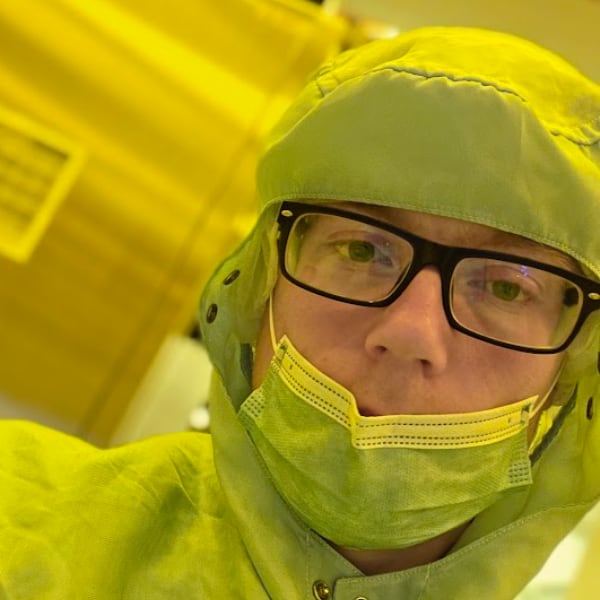While Zach does come to work in the lab once in a while, he spends most of his time playing every sport he can find. He specializes in broomball, an ice sport similar to hockey, which he plays year-round (on indoor rinks during the summer; believe it or not, Minnesota does thaw for at least a couple months every year) and occasionally around the globe, such as his stint on the top team of the 2024 IFBA World Broomball Championships. During his broomball off-days, he makes his way into the lab to mess with lasers or design ultra high-efficiency thin-film mirrors.
He is currently working on a project trying to design deformable mirrors with small wavefront aberrations despite inherent thickness errors in the layer profile of the mirror. He also actually does enjoy aligning optics, so if you ever need some help fiddling with mirror alignment give him a call!

Multiwavelength adaptive optic systems can experience phase errors when corrections measured at one wavelength are applied to others. Such errors originate from several sources, but poor optical coating design can play a major role since the phase dependence of any coating varies greatly with wavelength, angle, and thickness. To address these errors, a multilayer coating design is proposed where the effective electric field penetration depth into the coating is similar at all design wavelengths. Using this method, a two-wavelength coating is designed for 1070 and 1550 nm and compared to a standard two-wavelength high-reflectivity coating consisting of stacked Bragg reflectors. The standard stacked Bragg reflector design induces up to 173.0 nm of phase error across the wavelength band that reflects off the more deeply buried part of the multilayer. Alternatively, the two-wavelength equal field penetration design maintains a high reflectivity of 99.999%, while only inducing phase variations of 28.6 nm for both target wavelengths.